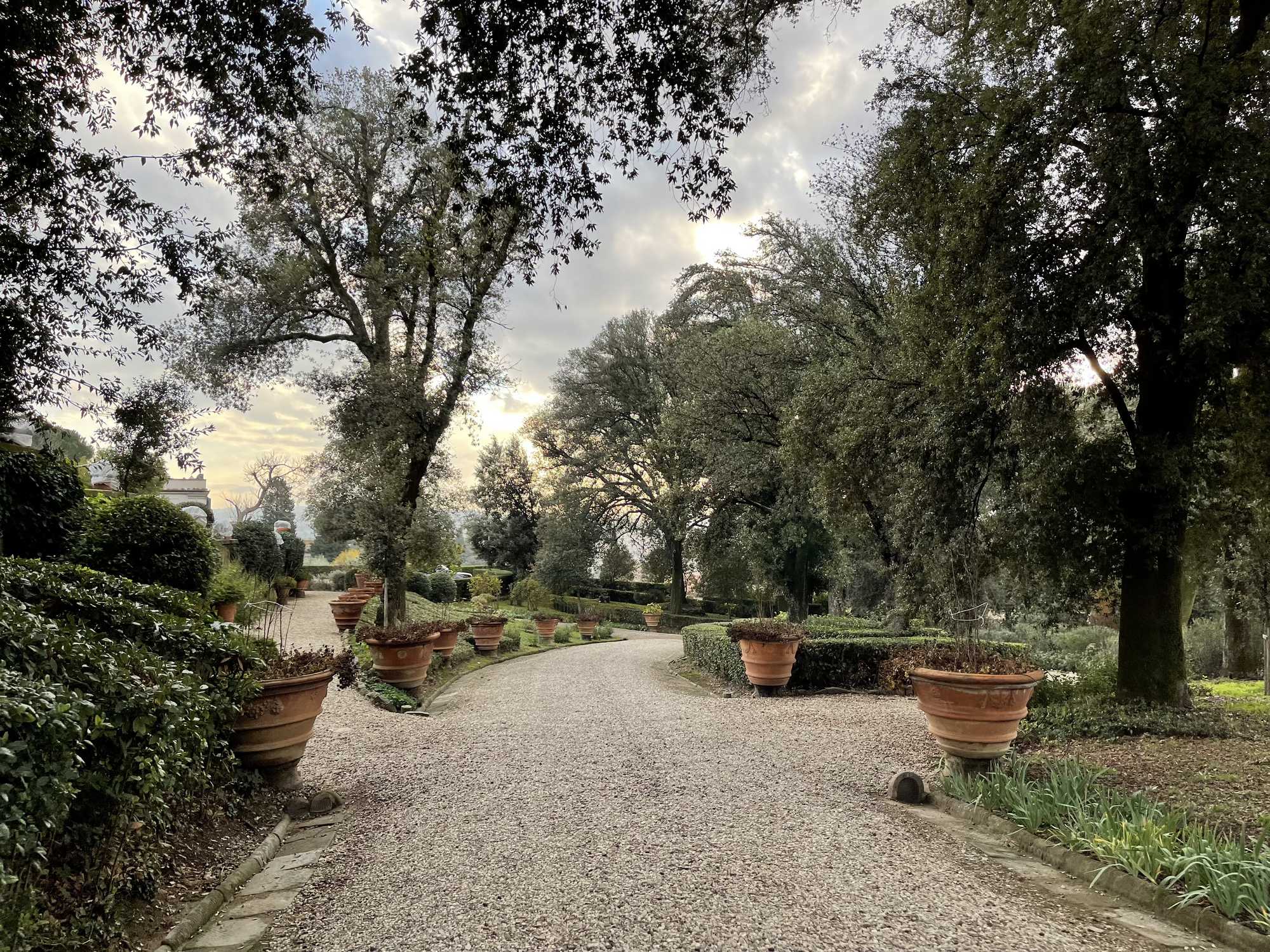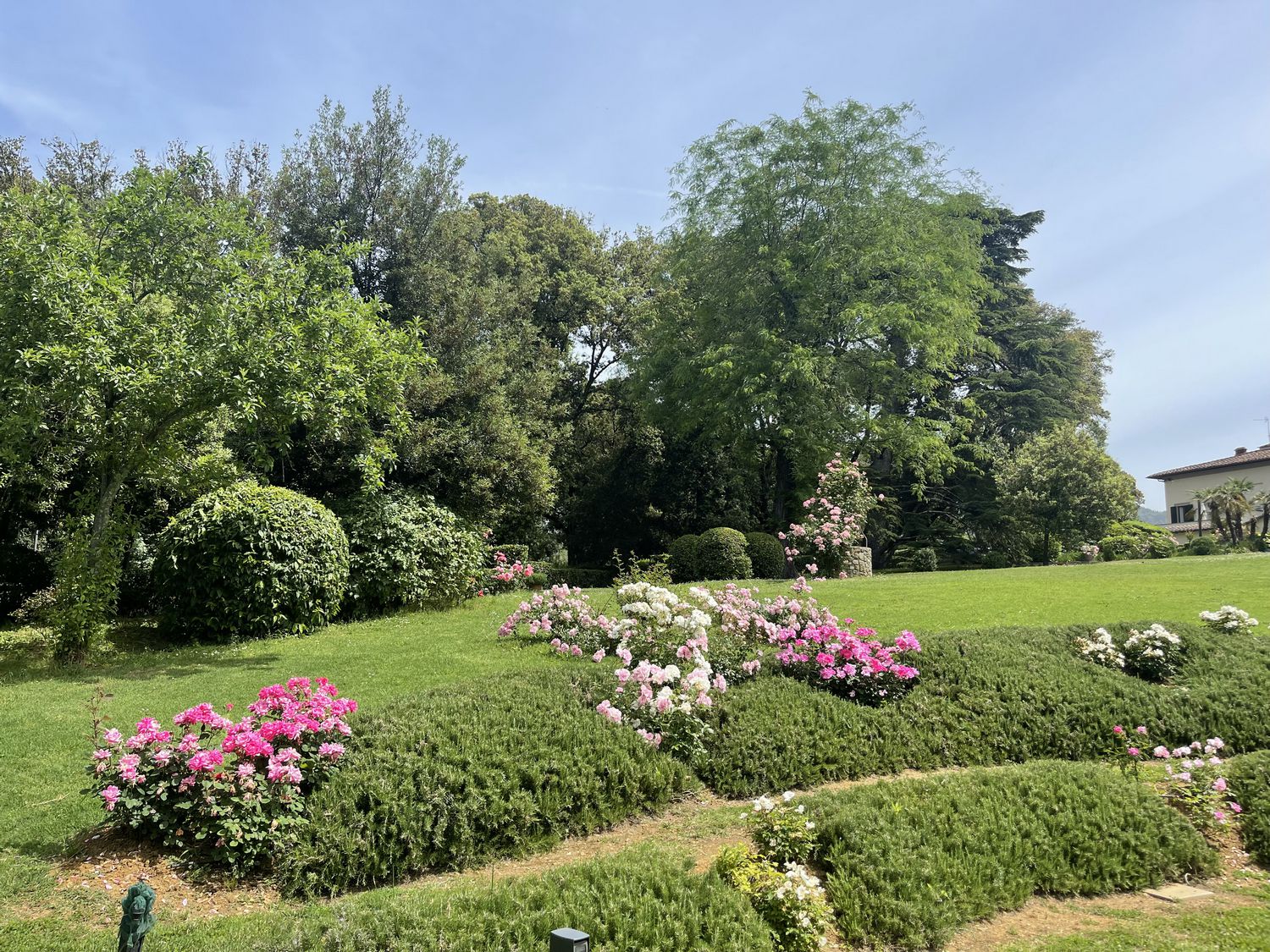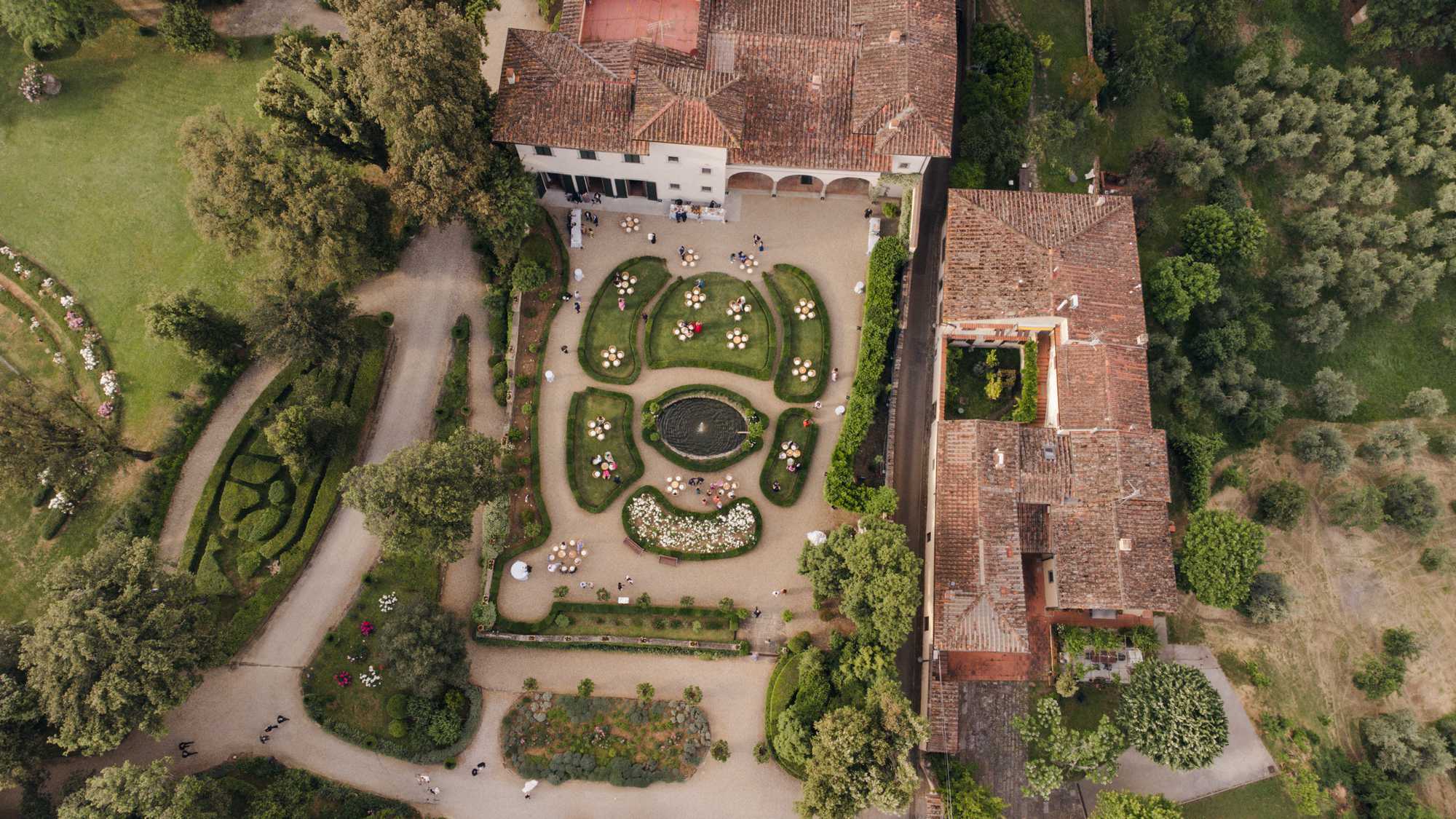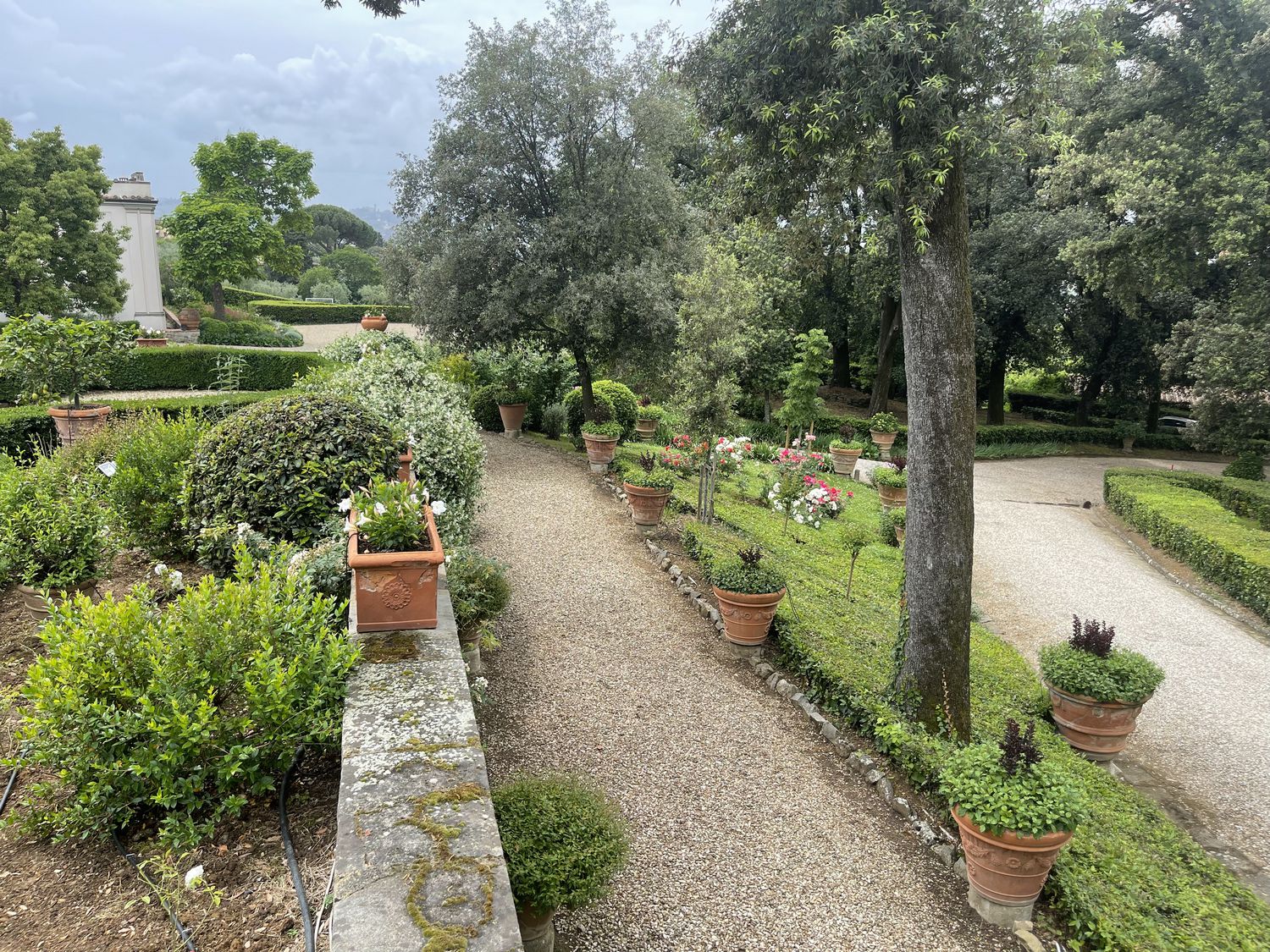
The Garden
The Villa ‘il Garofalo’ is embellished with an Italian garden (or ‘formal garden’), a creation that became widespread in the castles and villas of the nobility and upper middle class in the late Renaissance. It is characterised by a geometric subdivision of space by rows of trees, hedges and plant sculptures of various shapes, obtained by pruning evergreen bushes.

The Italian garden was conceived as a place of pleasure, but also of harmony and beauty. It was the
architect Niccolò Tribolo who designed the first Italian gardens in the 16th century, providing a model that was then developed scenographically over the following centuries. Among his best-known achievements is the design of the Bòboli Gardens in Florence.
A characteristic feature found in all ‘formal gardens’ are the ground decorations made of flower beds, evergreen hedges (often boxwood) and floral decorations on a lawn or gravel base.
The most commonly used plants are evergreens, especially cypress and boxwood, but also yew and cedar. In flower beds, flowers such as rose, lavender, ficus and rosemary are used. Among the trees, the preferred species are plane trees, holm oaks, maples and white poplars.
As the centuries passed, tastes changed. In the 19th century, the ‘Italian-style garden’ of Villa Il Garofano was joined by a large ‘English-style’ park. Following a typically Romantic taste, the plants in this park were placed in a deliberately ‘disorderly’ manner, resembling a natural wood. In reality, even the English garden was meticulously planned, sometimes with symbolic or philosophical meanings, but the intended effect was that of a pristine ‘state of Nature’.
In the park, the two cedar trees of Lebanon dating back to 1800 are of great value. Other secular trees are mainly holm oaks that require special care. These in fact need to be “accompanied in their old age” with special care, but they repay the visitor with their majesty and grandeur. Our gardeners intervene with targeted actions such as the aeration of the soil and the inoculation of fungi antagonistic to the harmful ones.

Thanks to the precious care and attention of Countess Maria Vittoria Rimbotti Colonna, also inspired by her friend and preeminent garden architect Arabella Lennox Boyd, the garden gleams joyfully with refined collections of flowers and shrubs. Much care has been taken to reduce waste, for example a rainwater recovery system has been implemented. The ancient well in the courtyard, dating back to 1200, is now used to collect water that flows into cisterns located throughout the park. Finally, all the wood from the prunings is stored as fuel for the winter, while the foliage is used to create self-produced fertiliser.


